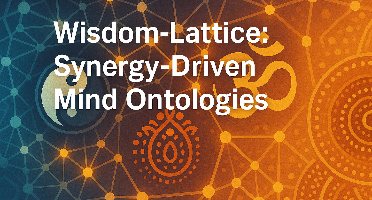
Gabriel Axel Montes
Project OwnerGabriel will lead & manage research project, serve as SME for wisdom tradition models, including intellectual direction, and decision-making over areas of interest and pursuit throughout the project.
DEEP Connects Bold Ideas to Real World Change and build a better future together.
Coming Soon
We will mine, formalise and creatively blend the consciousness-state vocabularies of at least two sources—choosing between Taoism and Hinduism wisdom traditions, and potentially alien-like models of intelligence, e.g. octopus cognition—inside the OpenCog Hyperon / MeTTa stack. Tradition-specific ontologies are built with uncertain Formal Concept Analysis; cross-source blends are ranked by information-theoretic synergy (ΦID) and mutual information (MI) as proposed candidates. Human, LLM and logical checks ensure novelty and coherence. Resulting concepts, code and datasets integrate into Hyperon’s Distributed Atomspace, fulfilling every must-have, should-have and could-have item in the RFP.
This RFP seeks proposals that experiment with concept blending techniques and formal concept analysis (including fuzzy and paraconsistent variations) using the MeTTa programming language within OpenCog Hyperon. The goal is to explore methods for generating new concepts from existing data and concepts, and evaluating these processes for creativity and efficiency. Bids are expected to range from $30,000 - $60,000.
- Submit a comprehensive research plan and a high-level framework design that together set the foundation for the entire project. The research plan details objectives scope boundaries ethics pathway risk register and agile task breakdown. - The design specifies how wisdom-tradition concepts will be mapped into formal contexts how uncertain FCA and information-theoretic measures (proposed candidates: ΦID mutual information entropy-surprise) hypothetically interrelate and how evaluation loops will combine PLN LLM critique and subject-matter expertise. - Optional: A system-level architecture diagram shows data flow from raw text to blended concepts within Hyperon’s Distributed Atomspace. No coding data harvesting or lattice generation occurs in this milestone; the output is entirely strategic and design-oriented.
- Research-plan text document - Conceptual-framework document (definitions diagrams metric-selection rationale) - Timeline/Gantt overview (PNG/SVG) - Optional: High-level framework design diagram
$12,500 USD
MeTTa developer approves the framework/architecture; project plan is in place; high-level framework design reflects the overall A-to-B of the project.
Assemble a significant proportion of the corpora for the selected sources/ wisdom traditions. Extract the initial set of concept-attribute relations and load them into prototype MeTTa context files creating ontology skeletons for each tradition. Develop and unit-test the uncertain-FCA library; generate first-pass lattices and visualisations capturing core conceptual clusters.
- Curated corpora of wisdom tradition sources - Draft MeTTa context files per tradition - Uncertain-FCA MeTTa library + unit tests - Initial lattice graphs (DOT/PNG)
$12,500 USD
Corpora and context files compiled; lattices compile effectively; the initial lattices reflect the major conceptual clusters of each tradition.
Substantial progress building the blend engine. Run an initial batch of concept blends to validate the end-to-end flow and collect preliminary performance and quality metrics. Refine with feedback from LLM’s.
- MeTTa blend rules + (optional) Python FFI helpers - Sample LLM-ranked blends list with raw scores - Benchmark summary report (proposed/suggested: run-time memory novelty indicators)
$12,500 USD
Preliminary pipeline/components run well within reasonable computing limits (desktop/VM, ideally); generates a set of promising blended concepts judged meaningful by subject-matter expertise and LLM’s; preliminary benchmark results report shows promise for establishes a performance envelope for final scaling.
Iterate blend thresholds (optimally using PLN logic) LLM (optimally including mult-agent) critique and subject-matter expert review. Compare information-theoretic–guided vs. uncertain FCA-only pipelines with final benchmarks. Package all code data and docs; build Docker image; record screencast demo; draft white-paper and final slide deck; push to public GitHub and submit completion report. Specifics are open to suggestions from the Hyperon/MeTTa teams.
- Evaluation dataset with expert labels & LLM - Optional: Information-theoretic refinement component -Comparative dashboard notebook - Git repo (MIT with commons clause) + Docker image + docs -Video demo & white-paper
$12,500 USD
Measurements between Information-theoretic (proposed candidate: ΦID and/or MI) pipeline(s) vs. uncertain FCA “novel + coherent” concepts; Hyperon core team merges pull request without major rework; public demo released under open licence.
Reviews & Ratings
Please create account or login to write a review and rate.
Check back later by refreshing the page.
© 2025 Deep Funding
Join the Discussion (0)
Please create account or login to post comments.